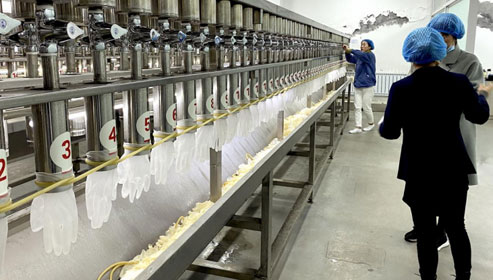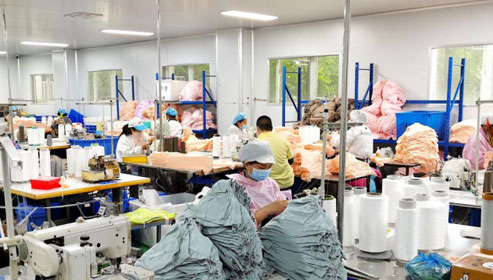Nitrile gloves perform excellent features as a type of disposable gloves, very soft, and strong enough to do anything disposable gloves can do. They offer the best splash protection against chemicals among the disposable gloves, they also have excellent barrier properties against biohazards, water-soluble substances, weak acids and bases, aliphatic solvents as well as oils and fats. They do not contain latex proteins which reduces the allergic reaction risk.
For the medical industry, nitrile gloves get the highest rate regarding safety and durability. They are reliable for the most hazardous tasks in a hospital. Nowadays, nitrile gloves are also massively used in other industries, such as food processing, homework, agriculture, animal husbandry, chemical laboratories, automotive and precise instrument manufacturing.

Nitrile gloves are made of nitrile rubber, a reprocessed form of latex, from butadiene (H2C=CH-CH=CH2) and acrylonitrile (H2C=CH-CN), mainly produced by low-temperature emulsion polymerization.
The features of nitrile gloves depend on the composition of butadiene and acrylonitrile. The butadiene component gives the copolymer elasticity and resistance to low temperatures, acrylonitrile is responsible for the good chemical resistance. Increasing the content of one of these components will reduce the propriety of the other. Thus, the manufacturer need to equilibre the ingrediants to produce the market required products.
Nitrile gloves are a type of disposable glove made from a synthetic material called nitrile. They are commonly used in medical settings, laboratories, food handling, and a variety of other industries that require hand protection. Nitrile gloves are known for their durability, puncture resistance, and chemical resistance, making them a reliable choice for many applications.
JQ Care is one of the Nitrile glove manufacturers produce these gloves in various sizes, thicknesses, and colors to meet different needs. We undergo rigorous testing to ensure they comply with quality standards and provide the necessary protection. When purchasing nitrile gloves, it is essential to choose a reputable manufacturer or supplier to ensure the gloves are of high quality and suitable for the intended purpose.
Nitrile gloves and latex gloves are two different types of disposable gloves with distinct characteristics. Here are the key differences between the two:
Material: Nitrile gloves are made from synthetic materials called nitrile rubber, while latex gloves are made from natural rubber latex. Nitrile is a synthetic form of rubber, while latex comes from the sap of rubber trees.
Allergies: Latex gloves can cause allergic reactions in individuals with latex allergies. Nitrile gloves, on the other hand, are latex-free and are a suitable alternative for people with latex allergies or sensitivities.
Strength and Durability: Nitrile gloves are generally stronger and more durable than latex gloves. They have higher puncture resistance, providing better protection against sharp objects and chemicals.
Chemical Resistance: Nitrile gloves offer superior chemical resistance compared to latex gloves. They provide protection against a wide range of chemicals, including oils, greases, solvents, and some acids.
Fit and Comfort: sterile latex gloves are known for their elasticity, providing a snug fit and high tactile sensitivity. Nitrile gloves, while less elastic, have improved flexibility and conform to the hand for a comfortable fit. 6. Cost: Latex gloves tend to be more affordable than nitrile gloves. However, prices can vary depending on factors such as quality, quantity, and market conditions.
Phone:
E-mail:
Hongkong:


